Elevation 391 m (1,283 ft) Area 76 km² Dialling code 0835 | Frazioni Craco Peschiera Demonym(s) Crachesi Postal code 75010 Patron saint Saint Nicholas | |
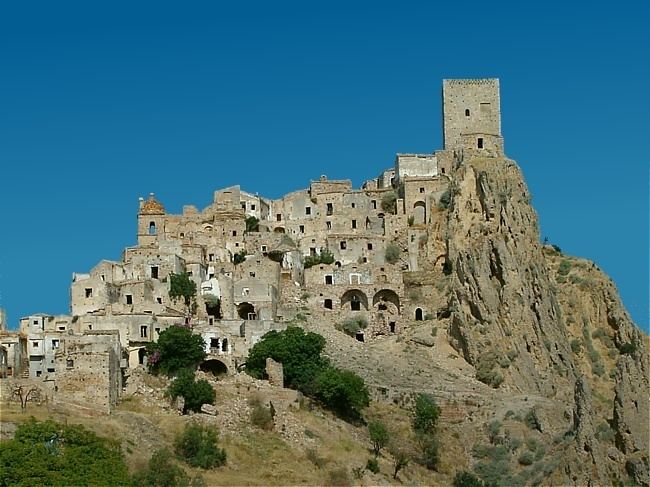 | ||
Weather 9°C, Wind NW at 19 km/h, 87% Humidity | ||
Craco the ghost town a drone s view matera2019
Craco is a ghost town and comune in the Province of Matera, in the southern Italian region of Basilicata.
Contents
- Craco the ghost town a drone s view matera2019
- Craco the most beautiful abandoned town
- Geography
- History
- Cinema
- Television
- Music
- Other
- References
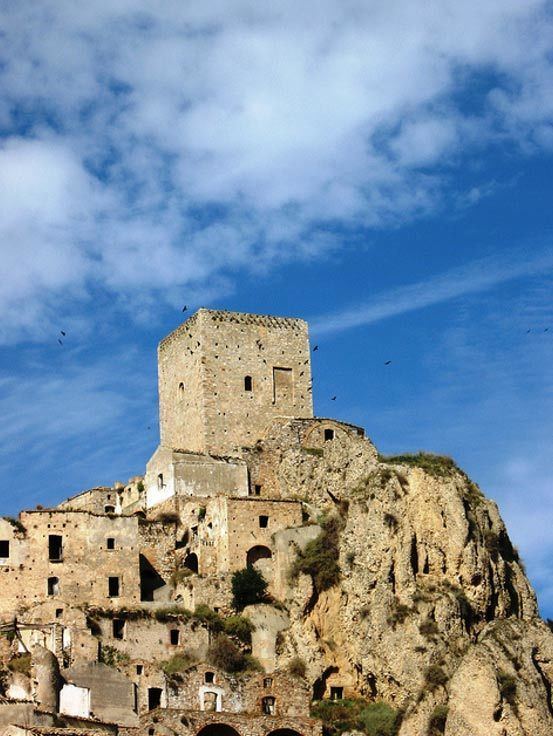
The old town was abandoned due to natural disasters. The abandonment has made Craco a tourist attraction and a popular filming location. In 2010, Craco has been included in the watch list of the World Monuments Fund.
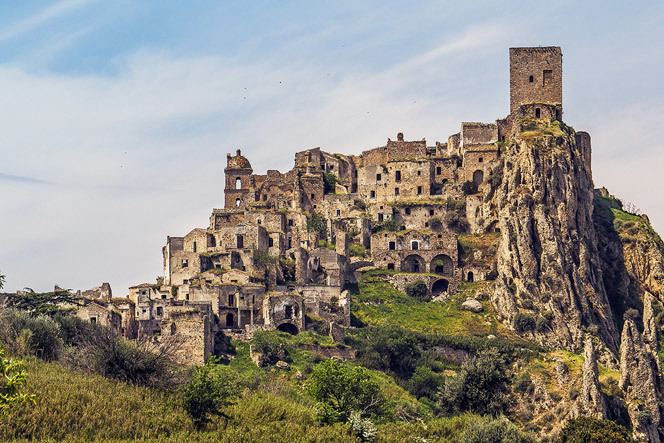
Craco the most beautiful abandoned town
Geography
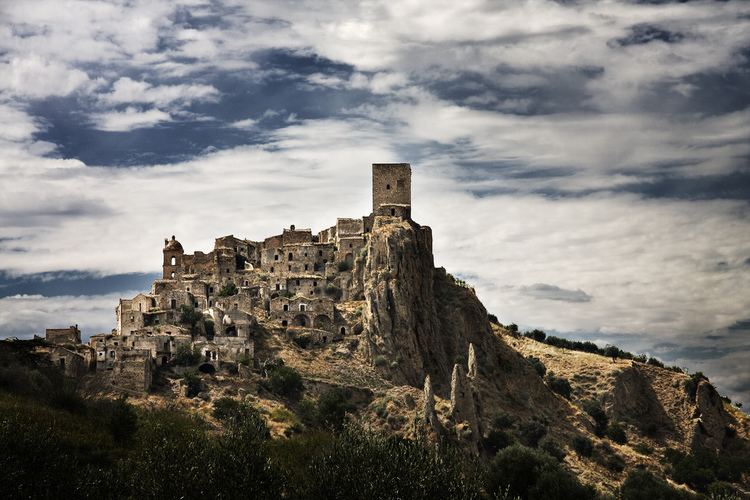
Craco is about 40 kilometres (25 mi) inland from the Gulf of Taranto at the instep of the “boot” of Italy. It is typical of the hill towns of the region with mildly undulating shapes and the lands surrounding it sown with wheat. The town was built on a very steep summit for defensive reasons, giving it a stark and striking appearance and distinguishing it from the surrounding land, which is characterized by soft shapes.
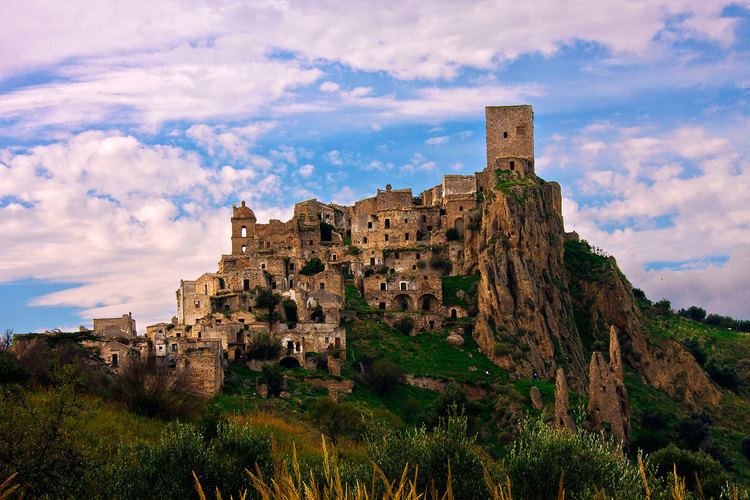
The centre, built on the highest side of the town, faces a ridge which runs steeply to the southwest, where newer buildings exist. The town sits atop a 400-metre (1,300 ft) cliff that overlooks the Cavone River valley. Throughout the area are many vegetation-less mounds called calanchi (badlands) formed by intensive erosion.
History
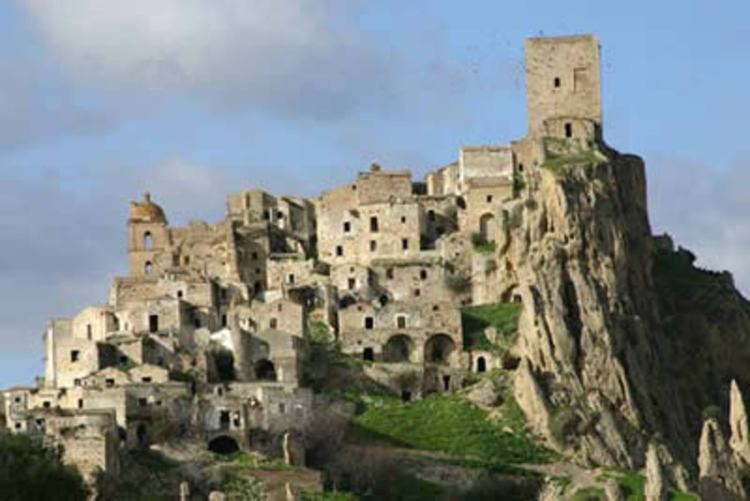
Around 540 BC, the area was called Montedoro and inhabited by Greeks who moved inland from the coastal town of Metaponto. Tombs have been found dating from the 8th century BC, suggesting the original settlement dates back to then. The town’s name can be dated to 1060 AD, when the land was the possession of Arnaldo, Archbishop of Tricarico, who called the area Graculum, which means in Latin "little plowed field". This long association of the Church with the town had a great influence on the inhabitants.
From 1154 to 1168, the control of the village passed to the nobleman Eberto, probably of Norman origin, who established the first feudal control over the town. Then in 1179, Roberto of Pietrapertosa became the landlord of Craco. Under Frederick II, Craco was an important military center and the Castle Tower became a prison.
In 1276, a university was established in town. During the 13th century, Craco became feudal tenure of Muzio Sforza. The population increased from 450 (1277), to 655 (1477), to 1,718 (1532), until reaching 2,590 in 1561; and averaged 1,500 in succeeding centuries. By the 15th century, four large palazzi had developed in the town: Palazzo Maronna near the tower, Palazzo Grossi near the big church, Palazzo Carbone on the Rigirones property, and Palazzo Simonetti. During 1656, a plague struck, with hundreds dying and reducing the number of families in the town.
By 1799, with the proclamation of the Parthenopean Republic, the townspeople overthrew the Bourbon feudal system. Innocenzo De Cesare returned to Naples, where he had studied, and promoted an independent municipality. The republican revolution lasted few months and Craco returned under the Bourbon monarchy. Subsequently, the town fell under the control of the Napoleonic occupation. Bands of brigands, supported by the Bourbon government in exile, attacked Craco on July 18, 1807, plundering and killing the pro-French notables.
By 1815, the town was large enough to divide it into two districts: Torrevecchia, the highest area adjacent to the castle and tower; and Quarter della Chiesa Madre, the area adjacent to San Nicola’s Church. After the unification of Italy, in 1861 Craco was conquered by the bands of brigands headed by Carmine Crocco.
With the end of the civil strife, the greatest difficulty the town faced became environmental and geological. From 1892 to 1922, over 1,300 Crachesi migrated to North America mainly due to poor agricultural conditions. In 1963, Craco began to be evacuated due to a landslide and the inhabitants moved to the valley of Craco Peschiera. The landslide seems to have been provoked by works of infrastructure, sewer and water systems. In 1972 a flood worsened the situation further, preventing a possible repopulation of the historic center. After the earthquake in 1980, the ancient site of Craco was completely abandoned.
In 2007, the descendants of the immigrants of Craco in the United States formed the Craco Society.
Cinema
Because of its unique and particular landscape, Craco has been the setting of many movies. In The Passion of The Christ (2004) by Mel Gibson, Craco is the town that can be seen in the scene of the hanging of Judas.
Other films shot in the ghost town include:
